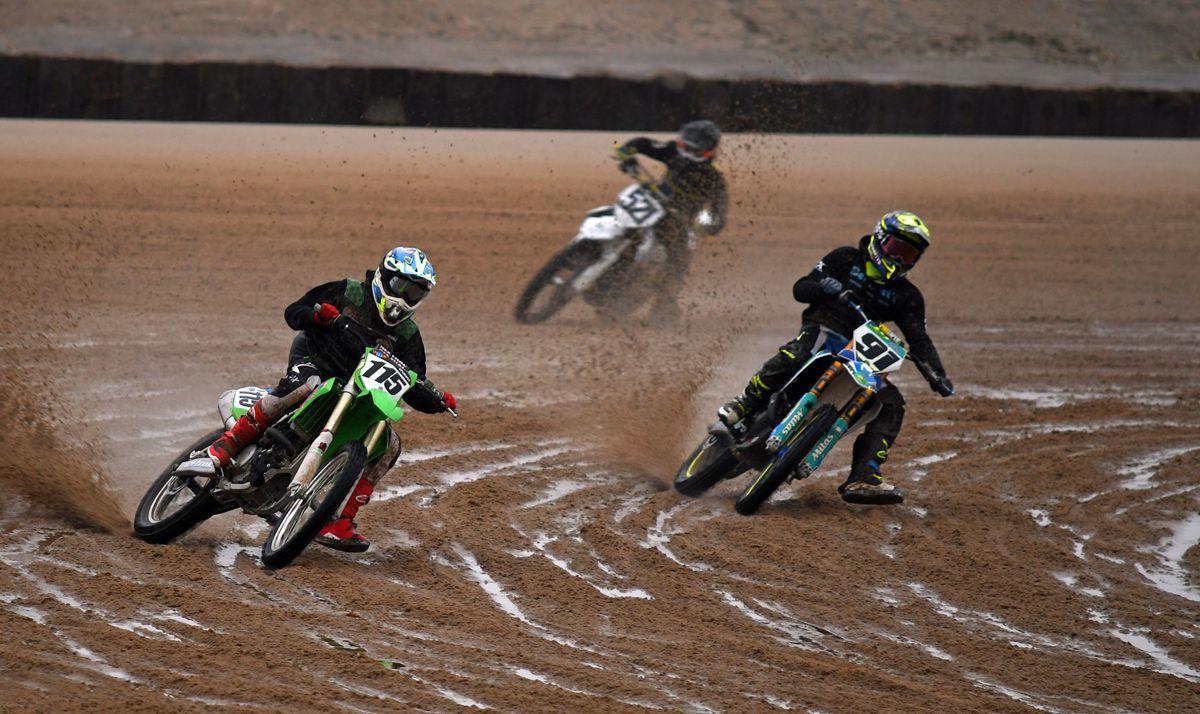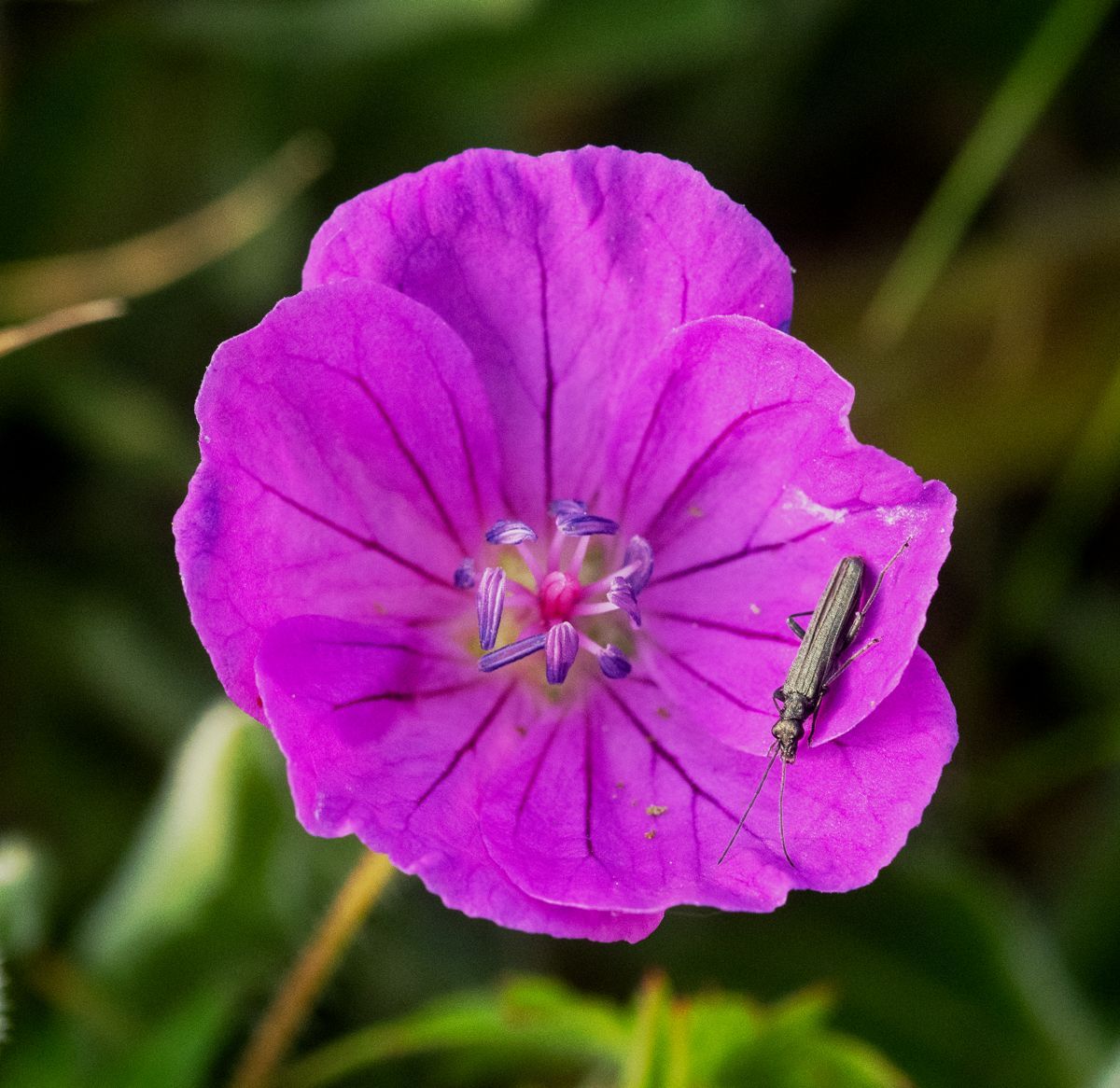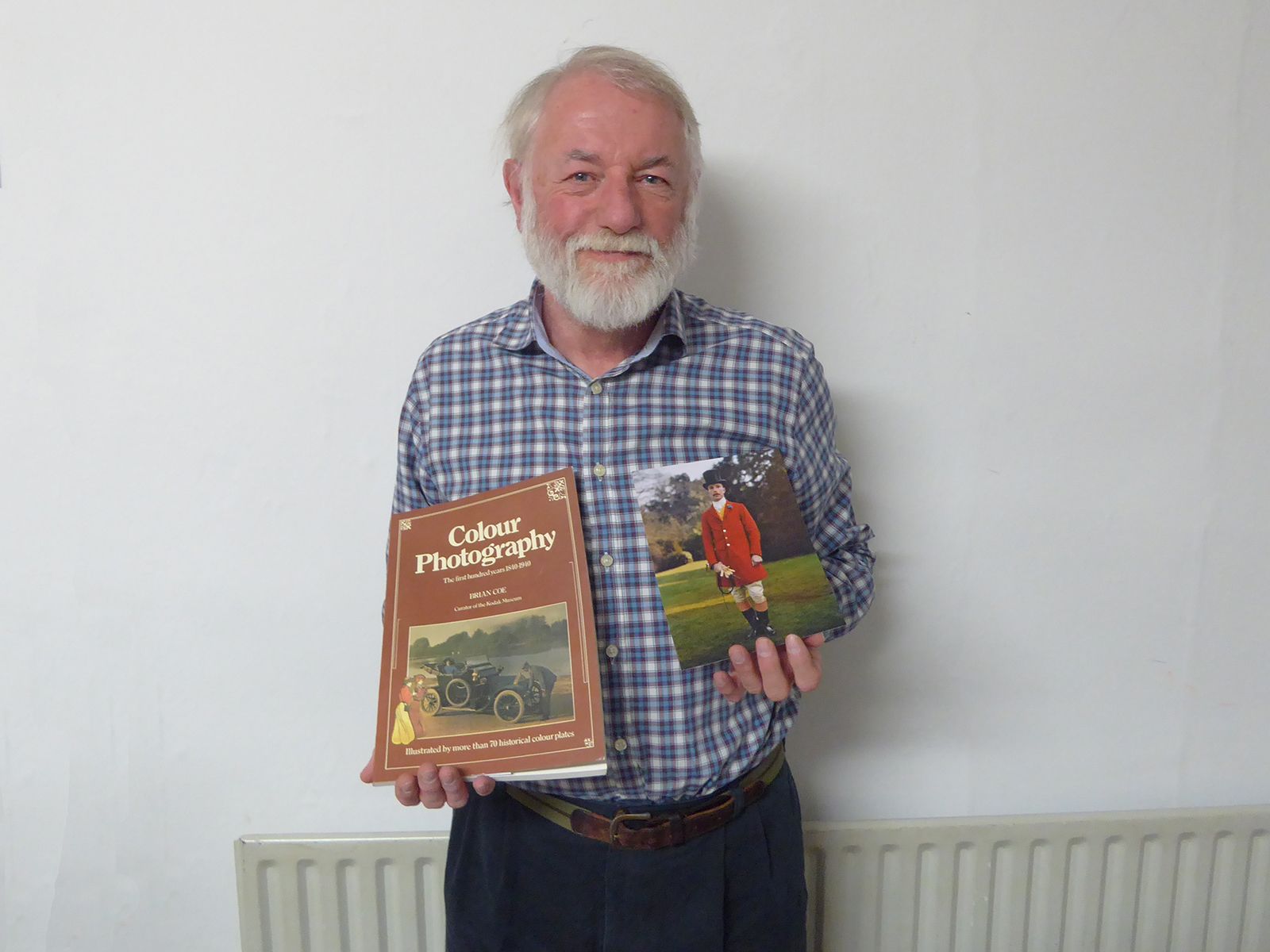Last Night - Wednesday 19th April 2023
Paul Malley • 20 April 2023
Members may be aware that Chris Birchmore provided a very short taster of what this evening's event would be about and our Guest Speaker, Ray Emery certainly did not disappoint with his hugely informative, entertaining and detailed path of the Autochrome development process.
Ray spoke of the search for images beyond the Black and White, and from 1839 onwards, independent individuals were attempting to progress capturing colour onto glass plates. Many could be hand-coloured as Daguerre type and even up to 1880, hand overlaying with oils was a popular method, this being continued into modern digital colouring methodology. A major step forward occurred in 1802, when Thomas Young introduced the 3-colour Receptor Theory; this was improved upon in 1860 through James Clark Maxwell, with the RGB Additive Principle, whereupon the search continued for a practical and commercial process for the masses. Soon, beautiful, creamy, blended and smooth images were being produced by male and female photographers versed in the skilled art of Autochrome imagery. Shellack use promoted a patent in 1892 and continued well into the 1940's; the Lumierre Brothers assisted the popular growth at the turn of the Century, and another advanced Autochrome patent was produced in1903 displaying full pano-chromatic coating - this went into production in 1907 utilising potato starch as grains, based on a filtration system and colour bias. The explanation of a cross section of an Autochrome plate was informative, whereby it is the reverse of the modern light-path method; in Autochrome section, the light passes through the glass, through a varnish layer, into the RGB screen, through a second varnish sandwich layer before striking the emulsion. The light loss for such resulted in an ISO of less than 1, hence a tripod was required and the subject needed to be stationary for a considerable period (Sport and Wildlife didn't feature for Autochrome!) The cost of the Autochrome media was raised and, despite the attempt to allow the masses to use Autochrome with a basic camera, the plates were about ten times the cost of the B&W alternative - very much a hobby for the more 'affluent' in society. The Presentation also showed the basic Projector function for the Autochrome glass slides, including a latter use 'water cooled' electronic or carbon-arc rear lit unit (what a treat for early H&S Managers...). Ray then spoke of how the Autochrome plates continued throughout the 1930s, before the Tri-pack 'Subtractive' methodology from the likes of Agfa and Kodak impacted on their favour in terms of ease and cost. Finally, a short review through PDI showed members just how beautiful, detailed and sympathetic this process was; even on the large screen, the projections were simply magnificent.
During the break, members had the opportunity to meet Ray, he was delighted to speak and his table presentation had numerous images taken from Autochrome slides, as well as four Autochrome slides with a magnifier, all backlit, so members could see each in their glory. There are a number of National Autochrome collections, a popular one being at the 'Science and Media Museum' in Bradford. Ray also brought a book entitled 'The Colour Photography Book' (up to approx 1940) by Brian Coe, which gives a further comprehensive account of the history and development of the Autochrome process. In sum, a wonderful, nostalgic and educational evening, well received by members.
Louth Photographic Society

Good Morning, All We did go to the sand racing again last week, the weather was a bit overcast but as no sky is required for this kind of photography, so good action shots are still possible. Last week at the club we held our monthly competition, of prints, with the categories of "People" and "Open". There was a very good entry with some excellent prints. David Whitehouse came first in the People section with Dave Turner winning the Open section. All the results are on our website under competitions with a blog on the evening as well. This week our Christmas buffet and quiz night will be held. The buffet will be provided for you but feel free to bring a drink along with you (a beer or glass of wine if you wish). Dave Mann will also be providing tea and coffee. Tony is doing a quiz for us all so bring a pen and paper if you remember, Christmas jumpers are optional. Harry will be selling raffle tickets, and if you would like to provide a prize please bring it along and give it to Harry. Regards Graham

A print competition was held last night with the categories of “People”, and “Open”. The judge for the evening was Dane Butler, this was his second time judging with us, and he is showing much more confidence in judging at photographic clubs. In the “People” category there was a wide variety of inventive images of people, from solo portrait style, to street, and groups of people, the highest placed print in this category was the “Pride Celebration (Cologne)” taken by David Whitehouse. In the “Open” category Dane had to judge wildlife, portraits, landscape, macro, and architectural prints, I thought he did a superb job, his choice for the top spot was “Cloud Inversion Summit of Snowdon” by Dave Turner. The website Competition page has been updated with the images, and results.

Good Morning All Last week at the club we viewed the Lincolnshire photographic Associations mono group presentation, Dave Turner who goes to the group talked us through the evening with Chris Birchmore and Richard Hildred talking about their photographs. There is a blog on the evening on our website, but inspired by the evening I thought I had better try a few mono photographs myself. This week, Wednesday 10th December, we will hold our monthly print competition, with the categories of "People" and "Open", to be judged by Dane Butler from Dunholme. There are good number of entries so should be a very good competition. The following week, Wednesday 17th December, is our buffet and quiz night, for new members the buffet will be supplied and anyone who would like to donate a raffle prize please give it to Harry. The evening is for members only. Regards Graham

Last night members were treated to a showing of the LPA (Lincolnshire Photographic Association) Mono Group presentation. Three of our members, Dave Turner, Richard Hildred, and Chris Birchmore are members of the LPA Mono Group. Dave Turner excellently presented this showcase of the Mono Groups work, many of the images presented were stunning, and inspirational. A simple photo of a padlock on a gate took on a different dimension when presented in monochrome, and landscape photography becomes dramatic in monochrome, especially with a moody sky. It was a very interesting, and well attended evening. Thank you to Dave Turner for presenting, and Dave Mann for the refreshments.

Good Morning All Last week at the club we held a committee meeting, with all committee members in attendance. Harry will once again run the Christmas raffle on our buffet and quiz night, if any member wants to donate a prize, Harry can now accept them, obviously if it's a perishable prize then bringing it in on the night would be better. We are holding a 70th anniversary exhibition next year at the Louth Museum, if any member has local prints that they think may be suitable to put in the exhibition you can bring them to the club any time now. Derek has done a blog on the night with more information. This week, Wednesday 3rd December, we are viewing the LPA mono groups presentation, Dave Turner is a member of the group and will talk us through what the group do and if time allows show us some of his own mono prints. Don't forget to bring your prints along this week for the print competition, with the categories "People" and "Open", to be held the following week, email your titles to Dave Turner in advance please. Regards Graham

We held a Committee meeting last night in place of a regular meeting. The Committee meets twice a year to discuss items pertinent to effective, and smooth running of our Society. The Society celebrates 70 years of continuous operation next year, and we intend to show an exhibition of photographs taken over those years at the Louth Museum. The LPA Battles print competition will be held next year, and consists of 3 rounds held at photographic clubs throughout Lincolnshire, with a final round held at Nettleham. Louth has been drawn to meet with camera clubs in Grantham, and Axholme, and as you can understand this will entail a far amount of travelling. There is a proposal to the LPA which is currently under consideration which would reduce each club entry to 10 prints and for the whole competition to be held at Nettleham in 2027. Our current annual project is “Prime Time”, that is one photo for each month of the year taken with a fixed focal length lens, a prime lens, my choice for this year has been a 45mm lens, which is a full frame 90mm lens. Members show their annual project photos in the January of the following year. The Committee has decided on the project theme for next year as “Water”, which should give members a chance to demonstrate some creativity, as can be seen from the attached image. Our Christmas social event will be held on the 17th December, a buffet will be provided, there will be a quiz, and a raffle, the door entry charge will be £3 for the evening.

Good Morning All Last week at the club we held our PDI of the year, it was a well-attended event and thanks to Harry's organisation skills it all ran very well. Congratulations go to all the subject winners: Pictorial, Harry Kerman, Record, Dave Evans, Portrait, Derek Smith, Photojournalism, David Evans, Landscape, Dave Turner and Natural History, Graham Harrison. The overall winner was Harry Kerman. Well done Harry a great photograph of a White Cosmos. All the top three in each subject are on our website Competition page. Don't forget if you are entering the December print competition, with the categories of "People" and "Open" send your titles to Dave Turner please. The prints need bringing in a week on Wednesday. This week, Wednesday 26th November, we are holding a committee meeting, committee members only for this one please. For newer members we hold two committee meetings a year to organise events and the smooth running of the club. Regards Graham

Last night we held our PDIOTY (PDI of the Year) competition, our judge for the evening was Jorg Malinowski. These annual competitions are an opportunity for members to showcase their best images from the year, some of course from the monthly competitions, as such the competition entries were of an extremely high standard. Jorg performed an excellent job of judging the entries, and the results are all on the website Competition page. Congratulations to Harry Kerman for gaining the title of PDI of the Year with his White Cosmos image.

Good Morning All While we were away the other week we did have a walk around Blackpool. I only took my compact camera which I bought in 2011 but it still works ok and takes decent photographs. It is a Panasonic LX5 which fits in a pocket and is useful now and again. Last week we had mini lectures; photographs we had taken on this year's outings. Four members took part with Richard Hildred filling in with wedding photography from forty odd years ago, a very interesting look at how Richard went about photographing weddings, very different from today with far less photographs been taken. The outings did show we managed to photograph insects and birds on our walks around Red Hill and Rimac. I finished the evening with photographs taken in Somerset and Devon in 2020. This week, Wednesday 19th November, we hold our PDIOTY (PDI of the year) to be judged by Jorj Malinowski of Lincoln. It will be an evening of our best photography and we have just over fifty entries. The NEMPF exhibition acceptances have now been decided, well done to Dave Turner who had two accepted and I managed one acceptance myself. The standard for acceptance is very high, we had four members enter twenty nine PDI'S all together and only three acceptances . We had a lot of near misses, the score required was twelve and we had twelve elevens between us. You will see the exhibition at our club next year. Regards Graham

At our meeting last night members gave a series of mini lectures with 3 members showing images from the club outings to Red Hill, and Rimac. The meeting was completed by Richard Hildred showing some of his early slides. One of the principles of our Society is that we feature workshops, and outings into our annual programme, because the best way to learn photography is to work with other photographers to understand aperture, shutter speed, and ISO. In June at the Red Hill nature reserve the idea was to capture some macro images of the local insect life, and the orchids at this location. Laying, or kneeling in the grass to get close to the insects, or flowers, our members would begin to understand depth of field with using different apertures, each photographer will have his own method of achieving optimum exposure, and sharpness. Personally I tend to use aperture priority mode (A or Av on the mode dial), auto focus, and “rock” gently back and forwards to gain the focus on the subject. At Rimac, members had a lot more latitude to photograph some bird-life, or landscapes. These are some sample images from the Red Hill, and Rimac nature reserves.




